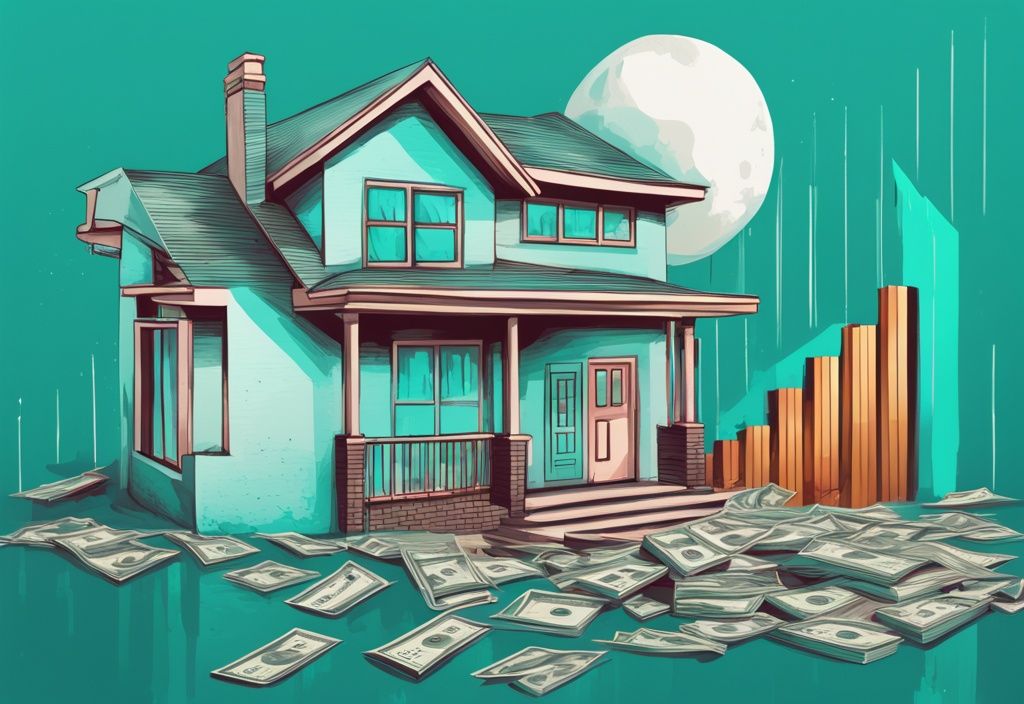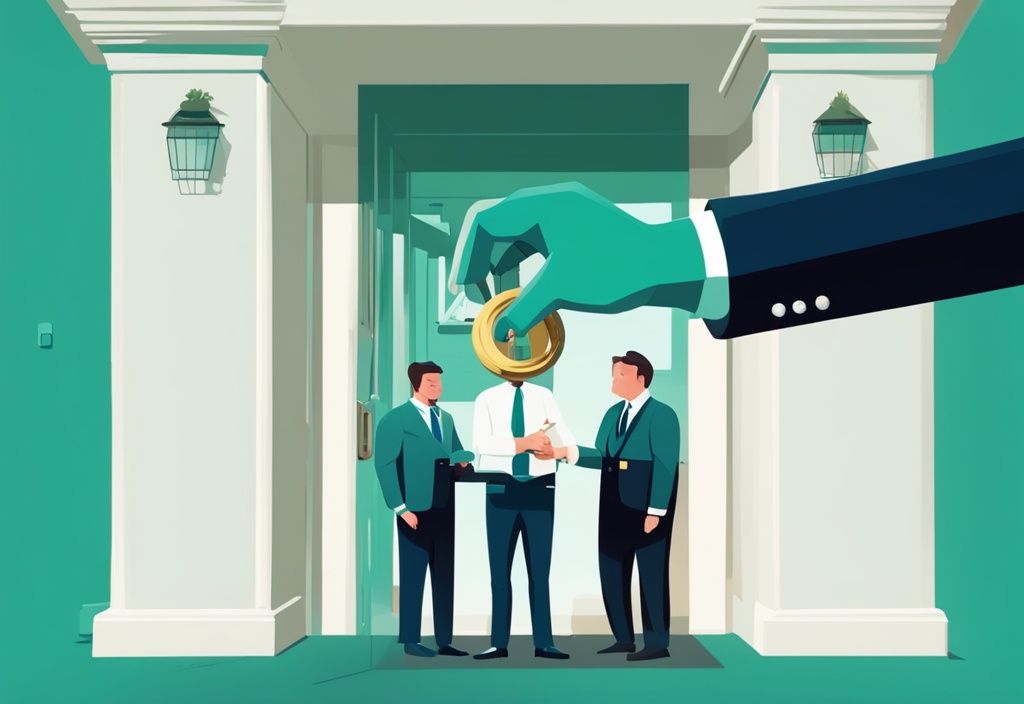Ever felt cornered by the rigid real estate world, particularly by limited savings or strict loan rules? You’re not alone. Here’s a game-changer for you: Creative financing in real estate – it’s all about innovative, flexible strategies to navigate these challenges.
In this post, we’ll unpack what creative financing in real estate really means. The ins and outs, the hows and whys – we’re stripping it back, right down to the brass tacks. We’re going to spotlight unconventional methods that will help you cut down financial stress and secure properties smoothly.
So, buckle up! Let’s reveal these real estate secrets together and pave your way to success in property ownership. Trust me, I’m with you every step of the way.
Part 1: What is Creative Financing in Real Estate?
In real estate, creative financing is all about using unconventional or alternative methods to acquire property. Unlike the traditional route, which often demands hefty financial inputs, creative financing minimizes the buyer’s out-of-pocket expenses. This technique lets buyers secure better interest rates and offers much-needed flexibility, often leading to more favorable terms.
At its core, creative financing emphasizes the property’s value, the seller’s motivation, and the buyer’s negotiation skills rather than focusing on the buyer’s income or credit history. This approach opens doors for those who might not qualify for traditional loans but excel in negotiating and understanding market dynamics.
Key Definition of Creative Financing
The concept became prominent in the late 1970s and 1980s, during a time of high-interest rates and strict loan qualifications that made traditional financing seem like an uphill battle. Faced with these economic challenges, investors started exploring alternative funding methods.
During this era, folks with low credit scores or insufficient savings found it tough to secure conventional loans. In response, creative financing strategies gained popularity. Innovators began leveraging approaches like seller financing or lease options to bypass traditional barriers, accessing the funds they needed despite financial obstacles.
As the real estate world continues to evolve, creative financing remains a reliable pathway for investors to achieve their objectives, even when conventional lending options aren’t on the table.
Part 2: Pros and Cons of Creative Financing in Real Estate
Exploring both the benefits and potential drawbacks of creative financing helps you make more informed decisions in your real estate journey.
Outstanding Benefits of Creative Financing
Understanding what is creative financing in real estate can unveil numerous advantages for prospective buyers and investors. Imagine being able to secure property with minimal personal resources—that’s one of its standout benefits! It opens the door for individuals who may lack significant savings but still wish to invest.
By leveraging other people’s money, creative financing offers the unique opportunity to make significant investments, even with limited personal funds. The flexibility here is unmatched. Terms can be customized to fit your specific situation, whether that means adjusting payment schedules or incorporating unique clauses.

Another notable advantage is the potential for immediate property acquisition. No need to wait for the lengthy, conventional loan approval processes, which can be crucial in competitive markets where timing is everything.
On the long-term planning front, creative financing provides multiple exit strategies. For example, you can save for a down payment or use a 1031 exchange to defer taxes, thereby maximizing your financial strategy.
Must-Know Pitfalls and Risks
While understanding what is creative financing in real estate reveals many benefits, it’s crucial to be aware of the accompanying risks. One significant drawback is the potential for higher interest rates compared to traditional financing. These elevated rates can inflate the overall cost of acquiring property.
Another pitfall is the risk of misunderstandings if agreements aren’t thoroughly and legally outlined. Clear, detailed contracts are essential; any ambiguities can lead to disputes and financial loss. For instance, understanding what a unilateral contract in real estate entails can help avoid such issues.
Legal complexities are inherent to creative financing, requiring solid legal advice and thorough due diligence. Given the varying structures and terms, professional guidance is vital to navigate potential legal pitfalls.
Personal relationships can also be strained if financial arrangements are made with friends or family. Mixing personal and financial dealings may complicate relationships, especially if the investment doesn’t go as planned.
In certain arrangements like “Subject to Mortgage,” the seller retains legal responsibility for the existing mortgage. This can be risky if the buyer defaults, as it leaves the original loan liability with the seller, potentially harming their credit.
Part 3: Comparing Creative Financing and Traditional Financing in Real Estate
When evaluating real estate financing options, it’s crucial to understand the distinctions between traditional and creative financing methods. This section delves into the prerequisites, flexibility, interest rates, and security aspects of both approaches, empowering you to make informed decisions that align with your financial goals and circumstances.
Traditional Financing: Prerequisites and Rigid Structure
Traditional financing typically necessitates a strong credit score, substantial savings, and a stable source of income. This method leverages the standard loan process, which is highly regulated and follows stringent criteria.
Imagine you’re trying to get a home loan. You’d have to undergo rigorous credit checks, provide evidence of steady income, and often contribute a significant down payment to qualify for a mortgage. This structured approach offers a straightforward path to financing but limits accessibility if you don’t meet these conventional criteria.
Creative Financing: Flexibility and Alternative Methods
In contrast to traditional methods, creative financing offers a variety of alternative paths to property acquisition without strictly relying on credit scores or substantial savings. Techniques such as vendor finance, lease options, or private money loans allow buyers to leverage unique arrangements that cater to specific needs and circumstances.
Think of it like this: You find a property you love, but your credit score isn’t ideal. With creative financing, you could explore options like a vendor financing where the seller finances the purchase. This flexibility makes creative financing an invaluable tool, especially if you might not meet the stringent requirements of traditional loans, enabling quicker and often more innovative property acquisitions.
Interest Rate Comparisons
One significant difference lies in the interest rates associated with each financing method.

Traditional loans generally offer lower interest rates, pegged to existing market conditions and regulated by institutions. However, creative financing can result in higher interest rates due to the personalized risk and negotiation aspects involved. While creative financing affords greater flexibility, it often comes at a premium, reflecting the increased risk to the lender.
Security and Risk Aspects
Traditional financing offers a higher degree of security and lower risk due to its rigorous vetting process and regulatory oversight. The structured nature of these loans ensures clear terms and conditions, providing peace of mind to both lenders and borrowers.
On the other hand, creative financing is nuanced and can entail various pitfalls, including higher interest rates, complex legal agreements, and potential for misunderstandings if not appropriately managed. As a result, while creative financing serves as a viable alternative, it demands careful negotiation, robust legal documentation, and thorough due diligence to mitigate associated risks effectively.
By understanding the nuances between traditional and creative financing, real estate investors can make informed decisions that align with their financial situation and investment goals. Leveraging the strengths of each method to your advantage can open up new opportunities in the real estate market.
Part 4: Most Effective Creative Financing Strategies in Real Estate
Creative financing in real estate allows buyers and sellers to think outside the box to make deals happen. By exploring various strategies, you can find innovative solutions tailored to unique financial situations.
Vendor Finance
Vendor finance, a popular method in what is creative financing in real estate, involves the seller acting as the lender. Instead of seeking approval from traditional financial institutions, the buyer makes monthly payments directly to the seller, bypassing the need for bank loans. This strategy is often advantageous for buyers who struggle to secure traditional financing due to stringent credit requirements or lack of substantial down payment.
Vendor finance offers a win-win solution: sellers can dispose of their property faster while buyers acquire property ownership without conventional hurdles.
Lease Option: The Rent-to-Own Approach
The lease option or rent-to-own approach is another key strategy in what is creative financing in real estate. It allows potential buyers to rent a property with the option to purchase it at the lease’s end. Throughout the lease period, a portion of the rent payments can be credited towards the future purchase, gradually building equity.
This method is particularly suitable for buyers who need time to secure traditional financing or improve their credit scores. It provides an opportunity to live in and experience the home before fully committing to its purchase.
Making Use of Hard Money Loans
Hard money loans are short-term, high-interest loans offered by private lenders rather than traditional banks. These loans are based on the property’s value rather than the borrower’s creditworthiness, making them a pivotal tool in what is creative financing in real estate. They are particularly suitable for rehab projects or fix-and-flip ventures where quick access to funds is crucial.
Despite the higher interest rates, the fast approval process and flexibility make hard money loans a viable option for seasoned investors aiming for swift turnarounds.
Private Money Loans: What You Need to Know
Private money loans are loans obtained from personal connections such as family or friends. This form of what is creative financing in real estate offers flexible terms and often involves less stringent conditions compared to traditional banks. However, while leveraging private relationships can offer financial benefits, it also carries the potential risk of straining personal ties if deals go awry. For those navigating creative financing options, understanding relevant real estate laws is essential to ensure compliance and minimize risks. It is imperative to treat these agreements with the same rigor and formality as traditional loans, ensuring all terms are clearly outlined and agreed upon.
The Power of Cash-Out Refinance
In the context of what is creative financing in real estate, cash-out refinance is a powerful strategy where a homeowner borrows against home equity to fund new investments. This process involves replacing an existing mortgage with a new one that has a higher loan amount. The borrower receives the difference in cash, which can then be used for additional property investments or renovations.
Cash-out refinance not only raises capital but also potentially secures better loan terms, making it a popular choice among savvy investors.
Understanding Home Equity Line of Credit (HELOC)
A Home Equity Line of Credit (HELOC) allows homeowners to borrow against the equity of their property, providing a flexible and revolving line of credit. This form of what is creative financing in real estate is ideal for financing renovations or repairs, offering lower interest rates than conventional personal loans.
Borrowers can draw funds as needed and repay over time, with interest typically tax-deductible. HELOCs offer significant flexibility and can be a valuable tool in managing ongoing property expenses.
Personal Loans and Real Estate Financing
Personal loans, unlike other forms of what is creative financing in real estate, are unsecured and do not require collateral. They are suitable for buyers with good credit but limited home equity.

While personal loans can be a quick way to access funds, they often come with higher interest rates due to the lack of collateral. However, they provide a useful solution for funding smaller real estate investments or covering immediate expenses without putting property at risk.
Part 5: Essential Considerations and Practices when using Creative Financing
Understanding “what is creative financing in real estate” is key before diving into the specifics. Let’s break down the necessary steps and best practices for anyone considering this innovative approach.
The Role of Property Value Evaluation
One of the first things you need to nail down when using creative financing in real estate is understanding the property’s value. Think of it like buying a car—you wouldn’t just hand over cash without knowing its worth, right? Professional appraisals and market analyses are your best friends here, as they provide critical insights into property valuation, which takes into account many hard facts about a property such as its location, lot size, amenities, and floor plan, along with the present value of future benefits that the owner will incur, making it essential to understand these factors before making an investment. For more information, visit https://www.investopedia.com/articles/realestate/12/real-estate-valuation.asp. They give you a solid understanding of the property’s market value and future potential, ensuring your investment makes sense. Getting expert advice can save you from the classic pitfall of overpaying and helps you make financially sound decisions.
Why Understanding the Seller’s Motivation is Crucial
When it comes to creative financing, knowing why a seller is selling can be a game-changer. Imagine you’re at a garage sale; understanding why the seller wants to get rid of stuff can help you negotiate better prices. The same goes for real estate. If a seller needs to move quickly, they might be open to flexible options like seller financing or lease options. By tailoring your offers to meet their needs, you create win-win scenarios that make deals more likely to succeed.
Perfecting the Art of Negotiation
Negotiation isn’t just a skill—it’s an art form in the realm of creative financing in real estate. Picture negotiation as a dance where both parties need to find a rhythm that works for them. Understanding each other’s needs and coming up with mutually beneficial solutions can turn a good deal into a great one. Strong negotiation aligns everyone’s interests, reduces risks, and clarifies terms to avoid future hiccups. Think of it this way: good negotiation = happy parties on both sides of the table.
Real Estate Law and the Importance of Due Diligence
Due diligence is your detective work in the world of creative financing. It involves making sure the property’s legal status is clear, terms are accurately assessed, and contracts are thoroughly reviewed. Skipping this step is like buying a house without inspecting it; you don’t want any nasty surprises! Especially in creative financing, where the terms can be complex, this step is crucial. Consulting a legal professional can help navigate these complexities and ensure all parties fully understand and agree to the terms, safeguarding your interests every step of the way.
Part 6: Frequently Asked Questions on Creative Financing
How Can Creative Financing Benefit My Real Estate Ventures?
Creative financing in real estate provides alternative funding routes when traditional options fall short. Imagine being able to acquire property with minimal upfront costs—it’s like getting the keys to opportunities without jumping through conventional hoops. This kind of flexibility means you can access funds faster and without the red tape that normally comes with traditional loans.
Should I Be Worried about the Risks of Creative Financing?
Of course, any financial strategy has its risks. Creative financing can come with higher interest rates and more complicated legal landscapes. Think of it like navigating a maze—it can be challenging and requires attention to detail. Proper due diligence is your map, and legal advice acts as your guide, helping to steer clear of potential pitfalls. Clearly outlining and documenting agreements goes a long way in ensuring everyone’s on the same page, protecting your interests.
What are the Specifics of Seller Financing?
With seller financing, the seller steps into the shoes of a traditional mortgage lender. The buyer makes payments directly to the seller, bypassing banks altogether. This setup is a lifeline for those who hit roadblocks with traditional loans due to credit challenges or other financial hurdles. It’s like having a generous friend who believes in your potential, giving you a shot at homeownership.
Can Creative Financing Be Beneficial for Those with Low Credit Scores?
Absolutely! Creative financing shines for those with low credit scores by shifting the focus from credit history to property value and negotiation terms. It’s akin to finding a path that values your current assets rather than your financial past. This way, you can secure property and work on improving your financial footing, giving you a fresh start and a positive outlook.
How Can I Safeguard Myself Against Legal Risks in Creative Financing?
Protecting yourself from legal risks in creative financing is all about thorough preparation. Dive into due diligence on the property and its terms like a detective uncovering mysteries. Engaging a legal advisor to structure and review agreements is crucial—they’re your safety net. Make sure all terms are clearly documented and everyone involved understands them to the letter. This transparency helps prevent misunderstandings and keeps your investment secure.
Conclusion
Creative financing in real estate opens up a world of possibilities beyond traditional mortgages, providing vital solutions for those who hit roadblocks with conventional loan processes. Imagine finding a way to buy a property with minimal upfront cash, making it an attractive option for buyers with low credit scores or limited savings. This approach focuses on the property’s value and the seller’s willingness to offer more favorable terms, often leading to better interest rates compared to traditional financing.
One of the standout features of creative financing is its flexibility. Unlike traditional loans that demand good credit, substantial savings, and a steady income, creative financing is far more inclusive. Various methods, such as vendor finance, lease options, hard money loans, private money loans, cash-out refinance, HELOCs, and personal loans, each provide unique pathways to homeownership. This diversity means that even when traditional routes are blocked, there’s usually an alternative solution available.
However, while creative financing has its advantages, it does come with its own set of risks. Higher interest rates, legal complexities, and potential misunderstandings can be significant hurdles. That’s why thorough due diligence and careful negotiation are critical. Getting solid legal advice and ensuring all agreements are comprehensively documented can make a world of difference.
In summary, understanding what is creative financing in real estate can unlock opportunities that might otherwise remain inaccessible. This approach requires strategic thinking, informed decision-making, and a strong grasp of the legal landscape. But with the right preparation and mindset, creative financing can be a powerful tool, turning potential challenges into stepping stones for successful property acquisition.
Hi, I’m Alex Harper, a real estate expert with over ten years of experience in property management and legal advice. My passion is making the often complicated world of real estate understandable. I share practical tips and simple solutions to help you make better decisions – whether you’re buying a home, renting or just want to learn more about the industry. With my knowledge and experience, I want you to feel well-informed and confident in your real estate projects. Let’s tackle this together!




